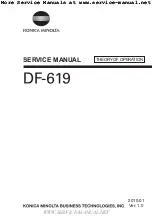
Velp Scientifica
– UDK139 Operating Manual
10004762/B5
116
40 - Separation of hydrocyanic acid from wastewaters
Heavy metal complexes, sulphides, aromatic amines, oxidants and dyes interfere
with colorimetric or titrimetric determination of cyanides. In these cases hydrocyanic
acid is to be separated from water sample by a distillation. Steam distillation at 95-
100°C gives results 0,5-1% lower than exact value, due to HCN hydrolysis to
ammonium formiate. Take into account that hydrocyanic acid is a very weak acid
(dissociation constant 7,2x10
-10
); its solutions at a pH lower than 12 release acid by
the action of atmospheric carbon dioxide.
Procedure
1) Water sample
The sample should be processed as soon as possible after sampling.
If it is to be stored, sodium hydroxide should be added to bring the pH to at least 12,
kept in a completely filled bottle, well closed and maintained at low temperature
(+4°C).
2) Reagents for pre-treatment and distillation
- lead carbonate (PbCO
3
), powder
- Ascorbic acid (C
6
H
8
O
6
), powder
- Sodium hydroxide(NaOH), about 1 N, 40 g/l
- Sulphuric acid (H
2
SO
4
), concentrated d.1,84
- Mercury chloride (HgCl
2
), 68 g/l in water
- Magnesium chloride hexahydrate (MgCl
2
- 6H
2
O) 510 g/l in water
- Silver nitrate (AgNO
3
) dried at 140 °C, 3.2467 g/l in water (0.0192 N),
- Rhodanine indicator, 0,02 g/100 ml in acetone.
3) Pre-treatment of the sample before distillation
- Sulphides are removed at pH 11 by adding lead carbonate powder up to a complete
precipitation of lead sulphide which is removed by filtration.
- Oxidizing agents are destroyed by adding ascorbic acid powder.
4) Distillation
200 ml of sample are introduced in 1 liter test tube (code A00001083). Add 10 ml of
mercury chloride solution and 5 ml of magnesium chloride solution. 10 ml of
concentrated sulphuric acid are added in the test tube immediately before to start
steam distillation, and test tube with sample is introduced in the unit UDK139.
Set the following analytical parameters:
Reagents addition:
H
2
O = 0 ml.
H
3
BO
3
= 0 ml.
NaOH = 0 ml.
To avoid damage to the distillator it’s strongly recommended to NOT use the
“removal of distillation residues” function.
The distillate is collected into a flask containing 50 ml of sodium hydroxide solution 1
N about. The tube collecting the distillate is to be taken off from the condenser and
substituted with a new silicone tube, which is introduced into the flask.
303








































